Hello, my name is Ben and I am one of the incredibly lucky students who received a position in the Trinity Botanic Gardens under the Cathcart Summer Internship programme.
I am about to enter my 4th year in environmental science at Trinity. I enjoy studying plant and animal interactions where the benefits or drawbacks can vary so differently between species. I was thrilled to receive the phone call from Dr Michelle Murray confirming my interview was successful and I would be starting work in June, which was perfect because where would be a nicer place to observe plant and animal interactions than the gardens!
I arrived the Tuesday after the June bank holiday excited and ready to begin the internship. I met Cherie and Helena, the other interns, and Michelle introduced us to the gardens and gave us the history of them, from its foundation in 1687 and the locations it moved to until 1967 which is when the garden in Dartry was founded.
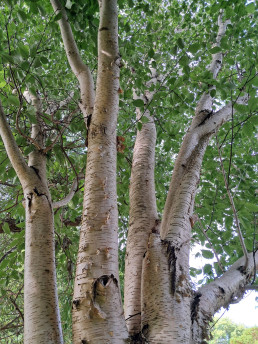

Arrival!
My favourite plant, the Trinity College birch (Betula utilis subsp. jacquemontii ‘Trinity College’). It has a beautiful white bark but also has a cool story behind it: the subspecies was discovered in the Himalayas and seed was sent to many botanic gardens, including Trinity College. When grown here its genes expressed a much whiter bark than the parent so was given the cultivar name ‘Trinity College’.
We met Mick and Liz who are the two full-time staff that run the garden and keep the place looking as beautiful as it is.
Michelle also introduced us to several fascinating plant species and the different problems facing them. The most jarring of them is the box hedge which divides spaces in the Walled Garden, but in the past year or so has been decimated by the Box Moth caterpillar eating its leaves. Removing the damaged hedge will be one of our tasks!
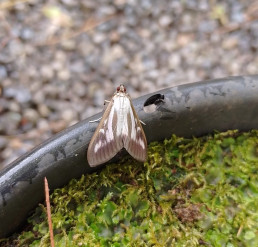

We were given our tools: secateurs, hand fork and gloves, and a foam kneeler. The coming Sunday the Garden would open to the public for the Annual Rathmines Garden Trail for charity – this year for the Alzheimer’s Association – and a lot of the work we would be doing for the next week would involve cleaning up some overgrown areas and general tidying, which we were more than happy to get stuck into. With our tools in tow, we begin to clear the sand bed by the lab.
The persistent weeds here that we were removing were Galium aparine which is a sticky weed, Rumex obtusifolius (broad leaved dock), and Oxalis sp. which is a wood sorrel. Once we had the bed cleared, we were able to place potted plants back onto it and arrange them to be aesthetically pleasing.
As the next couple of weeks went by we continued to make the area around look as nice as possible with Liz, Mick and Michelle showing us the ropes and reminding us to take ‘before and after’ photos. Here are some examples from a border in the Lawn Area, and the start of reestablishing some tree circles in the South Arboretum.
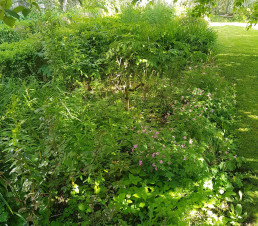

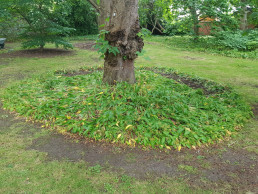

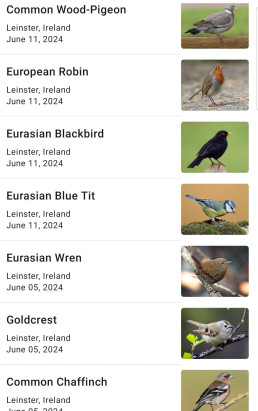
One thing however that I noticed while I was weeding was the sheer number of insects that would take shelter under the plants and once exposed there was a scramble to try and get new shelter to protect them from predators. Furthermore, once you moved slightly on to weed the next section of the bed, birds would then begin to gather and peck at the ground to try and get some easy food.
Seeing these birds and hearing them up in the trees gave me the idea to download an app called ‘Merlin’ which uses the microphone on your phone to identify the sounds and match them to a bird. Using this for really short periods during the week allowed the app to identify a range of birds.
Link to the free app ‘Merlin’

